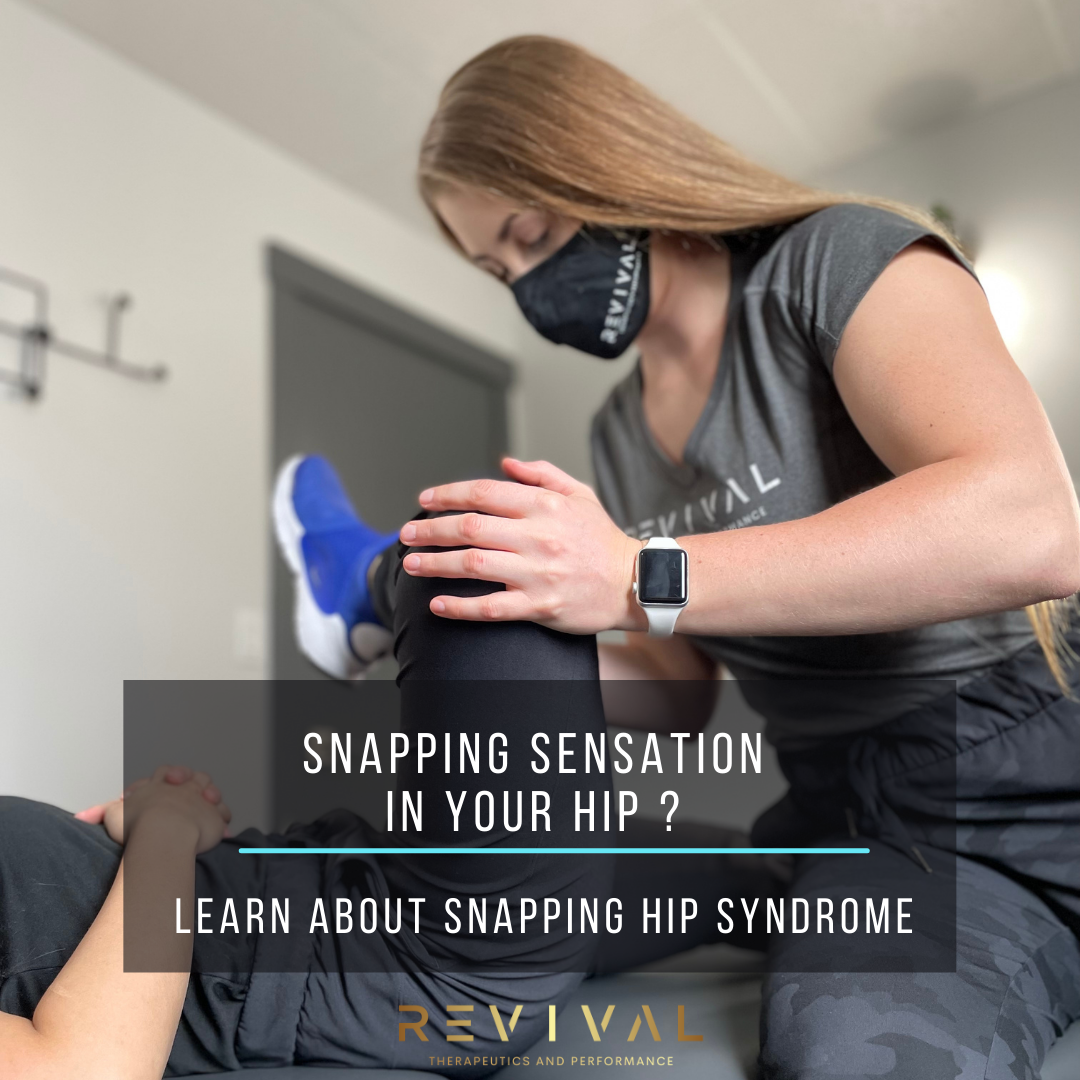
Do you experiencing popping, snapping or clunking in your hip ? ??♀️
Musical sounds from our body can often seem concerning at first.?
Know that they are very common and that sound alone is not cause for concern.
That being said they are not “normal”
These sounds could also include:
?Popping or snapping feeling with certain movements like leg raises or going up stairs
?Feeling of instability
?Pain that radiates throughout hip
?Swelling in front or side of hip
?Discomfort or difficulty going from sitting to standing or issues during running, stair activities.
What is important to note is that musical sounds like snapping or popping does not automatically mean damage is occurring. Often this means that the area is tight/weak/irritated and possibly having to compensate to perform the motion you are asking the body to do.
?So what is it ??
Snapping hip syndrome or coxa saltans is a palpable or auditory snapping with movement of the hip joint. (5)
If a noise happens continuously with certain motions it is likely involving a tendon snapping over a bone. Without pain there is minimal cause for concern but may be indication that some form of compensation is occurring.
If you experience pain with the noise we will want to investigate the potential for a type of snapping hip syndrome:
Internal:
⚫️Sensation deep in front of hip and groin with moving the leg from front (flexion) to behind them (extension) or from bringing the leg out to the side (abduction)
⚫️Can develop over time (gradual onset)
⚫️Could involve iliopsoas over a protrusion of the pelvic bone called the iliopectineal eminence or the rectus femoris muscle moves over the femoral head and iliopsoas bursitis
⚫️This is the most common type of snapping hip
External:
⚫️Sensation on the side of the hip that can involve snapping, popping or sharp pain. Individuals might also describe the feeling of the hip going “out of socket”.
⚫️Experiences with repetitive movements in addition to lifting or carrying heavy loads
⚫️Often only painful with repetitive motions like walking or running
⚫️Can develop over time (gradual onset)
⚫️Could involve the Glute Maximus muscle and iliotibial band sliding over the greater trochanter of the femur in addition to irritation of trochanteric bursa.
Intra-Articular:
⚫️Sensations can include snapping, catching, sharp pain and a dull ache deep within the hip.
⚫️Can develop suddenly from a fall or trauma or from repetitive trauma.
Could involve:
⚪️An Acetabular labral tear: This is an injury to the cartilage around the hip socket which can cause snapping and catching. 80% of intra-articular snapping hip cases involve a labral tear. (4)
⚪️Tear to Articular cartilage: Covering of boney surfaces and where they meet
⚪️Loose bodies within the hip joint
If you experience any of the symptoms we mentioned it is important to be assessed by a health care practitioner before starting exercises to “ correct” snapping hip.
Because everyone is unique, general exercises may cause more harm than good.
Snapping hip syndrome is typically treated with conservative measures including anti-inflammatories, stretching and avoidance of inciting activities.
✨Let us help you!
✨Take control of your hip pain. ✨

